On the evening of August 12th, we received a call about a horse named Dakota that had fallen through a wooden bridge on the Middle Fork trail. WASART deployed in partnership with King County Explorer Search and Rescue. The KCSAR Rapid Alpine Deployment Team was first on scene followed by responders from King County Explorer Search and Rescue (KCESAR) and WASART. The initial responders hiked the half mile up trail to Dakota and her owners to assess the situation. Our command checkpoint was the Middle Fork trailhead parking lot. After coming up with a preliminary plan, heavy gear was packed and hauled up the trail including rope bags, rigging equipment, glide, head protector, and Becker bar and slings.
Initial assessment of Dakota showed that her right hind limb was completely through a hole near the side of the bridge up to the level of her right pelvic bone. Her left hind limb was on the bridge deck, splayed laterally. She was laying across the bridge with her front hooves hooked over the other edge of the bridge. Her head and neck were resting on one of the bridge rails. There was a piece of wood missing along the edge of the bridge decking, creating a notch that Dakota would intermittently get her left hind leg caught in. She was alert, but clearly distressed, and would struggle to raise her front end up every 10 minutes or so. She was drinking water from her owner’s hand.
One of our first concerns was the additional rot in the wood surrounding the primary hole. To provide extra security in case the other boards started to fail, we passed webbing beneath those boards on the bridge and secured them to the top of a bridge post on each side.
A highline, anchored approximately 40 feet up trees, was set up over the bridge to provide the best high-directional for lifting Dakota out of the hole. The highline was redirected to a tensioning haul system. A tagline was attached to a Kootenay pulley from the “down trail” end of the bridge, the direction we needed to move Dakota. Another haul system was set up in line with Dakota’s hind end and anchored to a tree beyond the opposite end of the bridge, allowing us to pull her hind limb out of the hole as soon as she was lifted up by the highline.
There was no way to get the Becker slings beneath her (she was too deep into the hole), but we were able to pass a 4-inch wide webbing strap under her front end and down to her abdominal region. This was secured into a long loop around her abdomen, and eventually attached to both the highline and the hind end haul system.
When the owner’s veterinarian arrived on scene the systems were ready to go. Dakota was assessed and then sedated for the move and raise. Everyone took to their stations and we began.
We first raised Dakota about 6-12 inches using the Kootenay pulley on the highline. We then used the hind end haul system to move her out of the hole and covered the hole with a slip sheet before laying her back down on the deck. We raised her a second time and placed the Becker slings beneath her front and hind ends and secured them to the Becker bar attached to the Kootenay pulley on the highline. We then placed the glide beneath her. The highline tagline was attached to the front of the glide and was used to pull the glide to the end of the bridge, just before the 90-degree turn onto the trail at the end of the bridge.
Once there, we waited for the sedative to wear off, which took approximately 20 minutes. Using the highline and Becker slings, we raised Dakota to her feet and removed the glide. We slowly eased the sling support as she showed the ability to support her own weight. Dakota eventually walked forward a couple steps and was able to place and support her limbs. We then released the Becker straps from her. Dakota’s owners and veterinarian walked her back to the parking lot where she was loaded into their trailer.
The rigging systems were deconstructed and members were sent downhill once they had a full load of gear to carry.
KCSARA and WASART debriefed, packed up, and headed home.
We are incredibly thankful for the assistance of the King County Explorer Search and Rescue rigging team and field members for their professionalism, skill, and willingness to work into the early morning hours to help. They were an invaluable part of this advanced large animal technical rescue. In total, 33 responders between WASART and KCSARA contributed to the successful outcome. A big thank you also to Dr. Dana Westerman and her team!
We wish Dakota a full recovery and many happy trails in her future.
KCESAR and WASART are both all volunteer rescue organizations. For more information please visit:
www.wasart.org
www.kcesar.org
www.kcsara.org
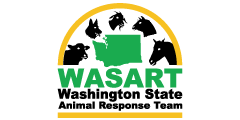
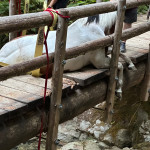
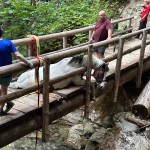
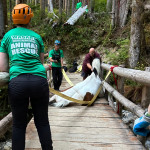
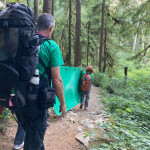
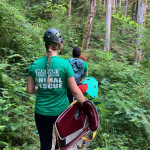
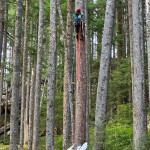
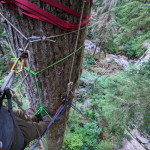
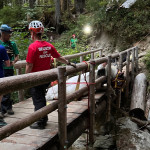
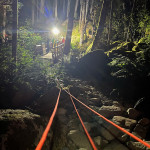
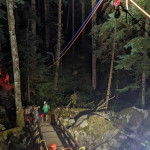
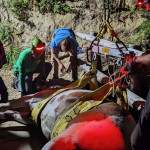
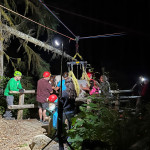
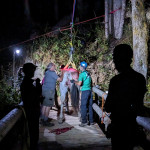
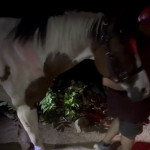
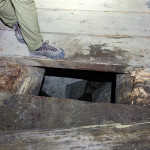
 Kahu, Dog on Mailbox Trail
Kahu, Dog on Mailbox Trail